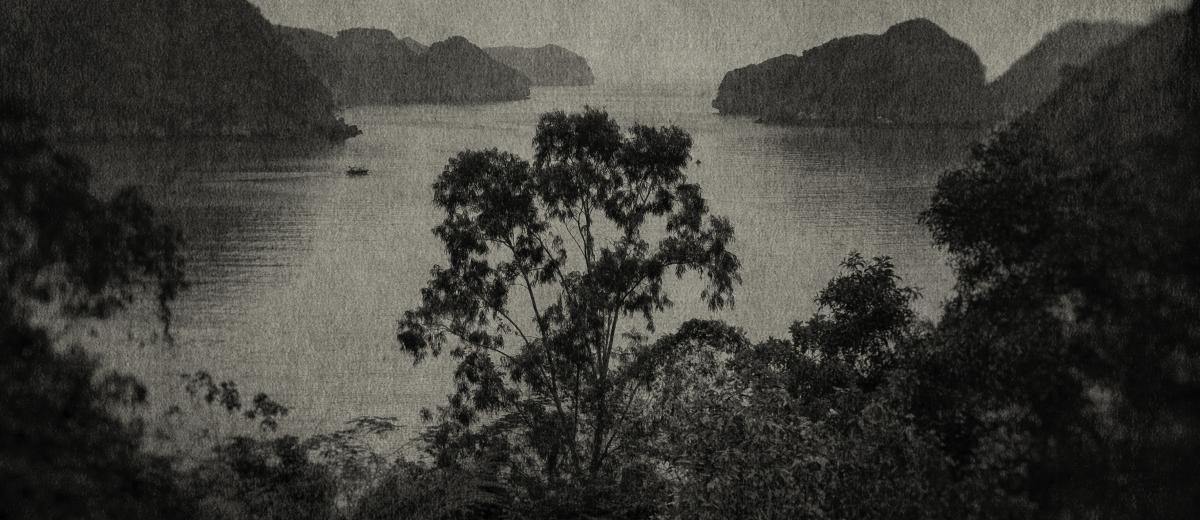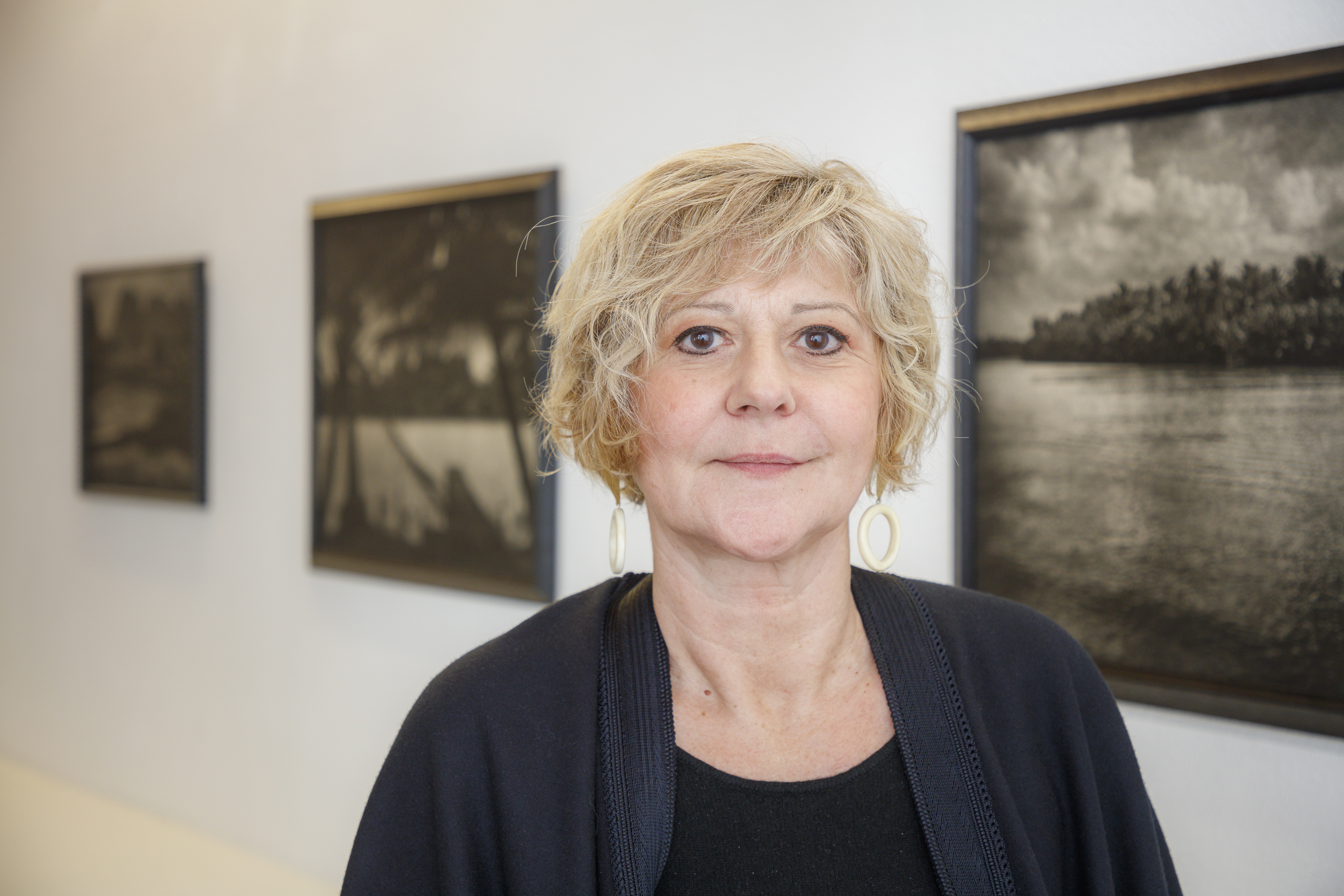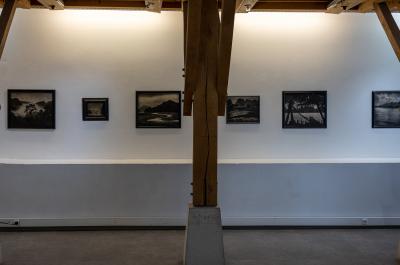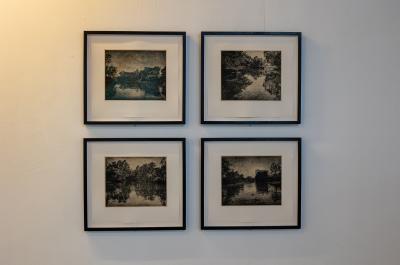FLORE
"L’odeur de la nuit était celle du jasmin"

FLORE’s whole approach seeks to make each of her photographs unique. Her career mirrors the artistic aims that came to the fore in the late 19th century, when the pictorialists initiated a debate on photography as an art form. Believing firmly in art’s expressionist character, they asserted that any emotion has a visual equivalent able to express and communicate it. Photography could therefore circumvent reality by distorting it when taking a picture or transforming it during the printing process. Or even both. It was no longer a question of documenting the outside world but rather of inventing forms capable of reproducing the artist’s inner world. Pictorial vision, the image become painting.
FLORE was marked by art and what lies beyond at a very early age. Her mother was an artist and her father an amateur photographer. Part of her childhood was spent in Egypt and two of her grandparents liked to talk of their life in Indochina. Real and imagined memories intermingled. FLORE’s photography is a search for this personal mythology. She roams the sites of an extended memory that combines her own impressions with the feelings of others. Her life in Alexandria has left her with a love of Egypt and the countries of the Maghreb, and she pays tribute to the earliest photographers’ taste for those lands of light and shadow. The work she has produced there has a timeless quality, reminiscent of the watercolours of Delacroix and other orientalist painters, of Théophile Gautier’s The Novel of the Mummy and Pierre Loti’s writings. So many evocations that make up her inner being. She travels to Egypt once, and then again, as is always the case when a story grips her. She returns to the places she only knows in dreams or literature and listens to them patiently. A first series is followed by a second. Such is the case for all those that came into being in Alexandria, Rivesaltes and Vĩnh Long. All of them are necessarily different as the artist never returns in order to repeat herself, but rather to explore her memories otherwise, to find other more eloquent places and angles. “With these almost nothingnesses that she provides us with, like so many offerings in which time is suspended, FLORE broadens our vision and enlarges the world of unsuspected spaces”, emphasises Chief Heritage Curator Susana Gállego Cuesta.
The photographer, who uses black-and-white and colour Polaroid and analog cameras interchangeably, is interested in all photographic processes. She chooses one type of camera rather than another and a specific type of film, and attaches real importance to the paper she uses, as it will be the flesh of her image, and to the technique, its developer. For FLORE, the printing process is a crucial stage in creation. It is here that emotions crystallise, that memories summon up an atmosphere. Graininess, haziness, depth of blackness and choice of chroma all help emphasise the ambiguity of memory. The photograph feeds on the real but drinks of the imaginary. FLORE draws the beholder into utopias or at the very least takes on reality with poetic distancing. Usually devoid of human characters, her images elude anecdote and temporality. Everything that predestines them to be reproduced in book form, as they have been several times with great success. Hence, the series to be exhibited at the Domain of Chaumont-sur-Loire forms the basis of an outstanding book, winner of the Nadar Prize. L’odeur de la nuit était celle du jasmin (The Scent of the Night Was that of Jasmine) continues on from an earlier work, Lointains souvenirs (Distant Memories), a variation on Marguerite Duras’ youth in Indochina. In this new work, produced in the context of the Marc Ladreit de Lacharrière Photography Prize in partnership with the French Academy of Fine Arts, FLORE has drawn on her memories of childhood and the stories told by her grandparents, who lived at the same time and in the same places as Marguerite Duras, snippets of life nourishing what she sees as part of an imagination common to her and the writer. Short extracts from the latter’s texts form a counterpoint to the waxed, tea-tinted black-and-white photographs.
“FLORE composes a travelogue in which landscapes succeed each other, fighting over water and dust, interior views permeated with invisible presences, colonial villas that may or may not still be inhabited. A silent world, languishing and deserted, whose only surviving inhabitant seems to be a little girl seen from behind while she watches the endless river flow. Is it through her eyes that this entire world is perceived? A lost world, retrieved at the click of a camera”, as the art critic Jean-Christian Fleury wrote in 2017. If her discovery of Vĩnh Long left a lasting mark on Marguerite Duras, it is the same epiphany that underlies FLORE’s quest, a search for order in the impalpable, the inexplicable. She had to track down what was still in the air and what had so fascinated the young Marguerite. The artist in enthralled by the act of travelling in time and she readily admits that she is not a travel photographer but that each and every subject serves as a pretext for the evocation of earlier worlds. From her grandmother’s house, she remembers the sound of the gong summoning the guests to the table, the statue of Buddha above the fireplace; and her distress when all these mysterious objects were finally dispersed. Myth develops through absence. FLORE brought back a sensitive body of work from Vietnam, a kind of fiction of herself. “Photography is the very essence of my life, a relationship with the world, a mode of expression and an artistic practice. Along with love, photography means everything to me”, she asserts.
BIOGRAPHICAL NOTES

FLORE is represented by the Galerie Clémentine de la Féronnière/Paris (France), Galerie 127/Marrakech (Morocco), Blanca Berlin /Madrid (Spain), Alessia Paladini/Milan (Italy), Esther Woerdehoff/Geneva (Switzerland) et Wada-Garou/Tokyo (Japan).


